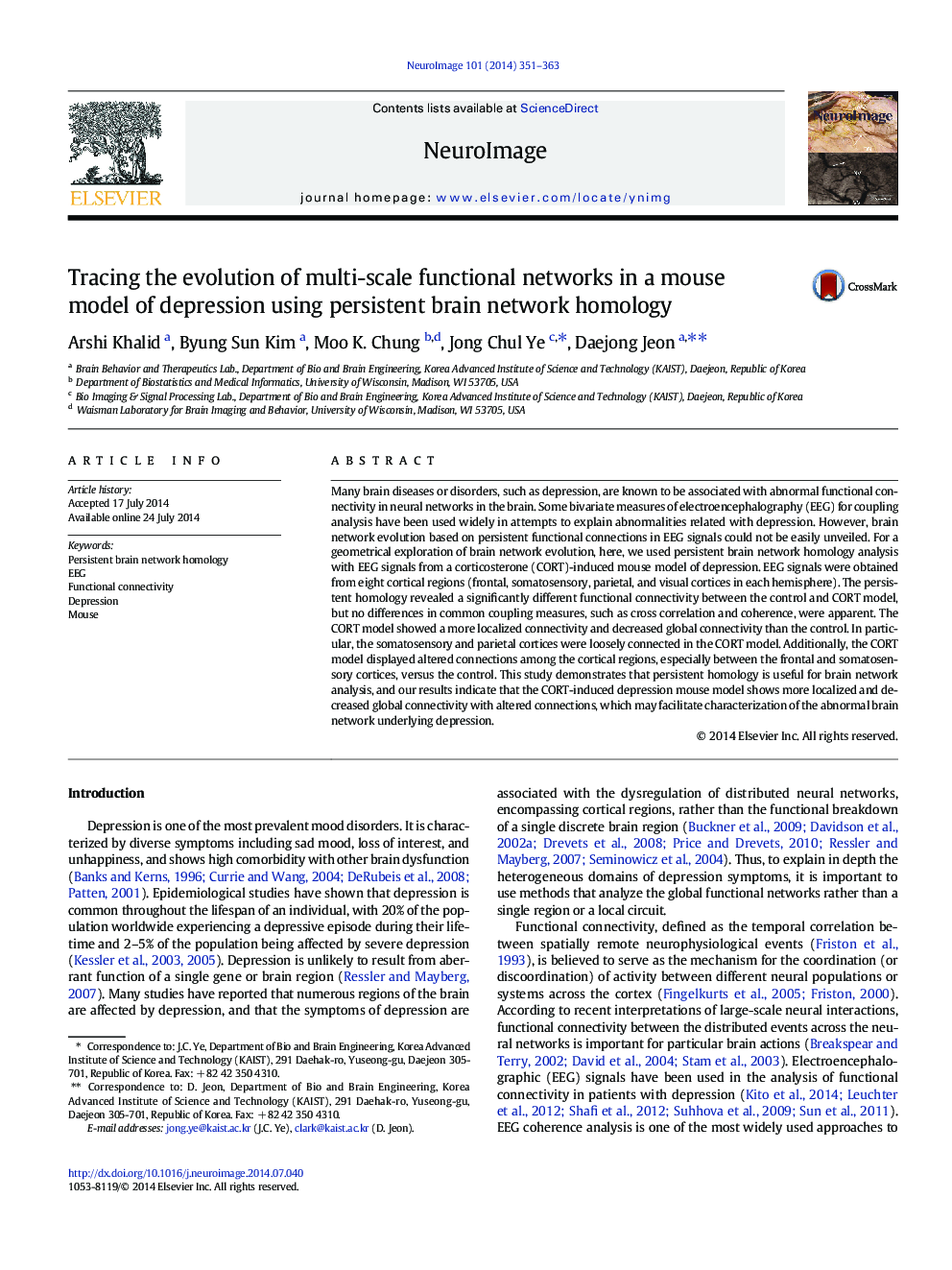| Article ID | Journal | Published Year | Pages | File Type |
|---|---|---|---|---|
| 6026319 | NeuroImage | 2014 | 13 Pages |
Abstract
Many brain diseases or disorders, such as depression, are known to be associated with abnormal functional connectivity in neural networks in the brain. Some bivariate measures of electroencephalography (EEG) for coupling analysis have been used widely in attempts to explain abnormalities related with depression. However, brain network evolution based on persistent functional connections in EEG signals could not be easily unveiled. For a geometrical exploration of brain network evolution, here, we used persistent brain network homology analysis with EEG signals from a corticosterone (CORT)-induced mouse model of depression. EEG signals were obtained from eight cortical regions (frontal, somatosensory, parietal, and visual cortices in each hemisphere). The persistent homology revealed a significantly different functional connectivity between the control and CORT model, but no differences in common coupling measures, such as cross correlation and coherence, were apparent. The CORT model showed a more localized connectivity and decreased global connectivity than the control. In particular, the somatosensory and parietal cortices were loosely connected in the CORT model. Additionally, the CORT model displayed altered connections among the cortical regions, especially between the frontal and somatosensory cortices, versus the control. This study demonstrates that persistent homology is useful for brain network analysis, and our results indicate that the CORT-induced depression mouse model shows more localized and decreased global connectivity with altered connections, which may facilitate characterization of the abnormal brain network underlying depression.
Related Topics
Life Sciences
Neuroscience
Cognitive Neuroscience
Authors
Arshi Khalid, Byung Sun Kim, Moo K. Chung, Jong Chul Ye, Daejong Jeon,
